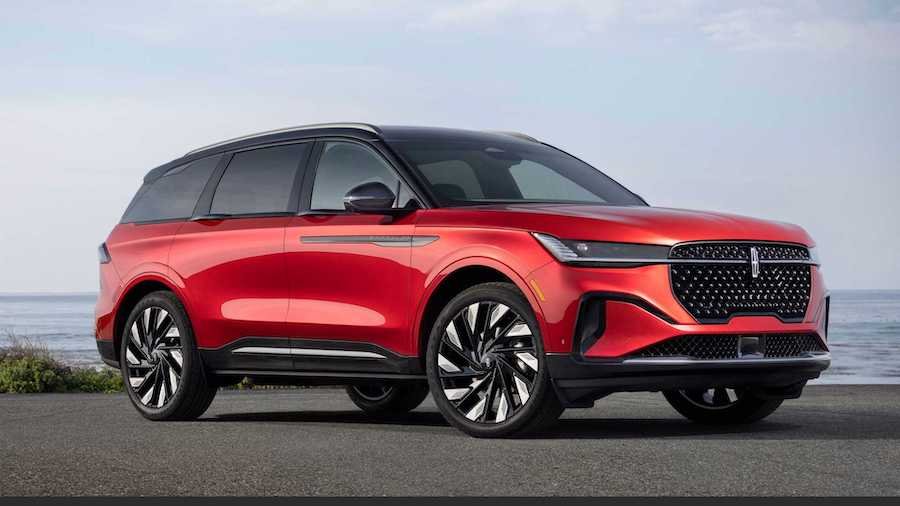2024 Lincoln Nautilus Revealed As A Big-Screen, Hands-Free Sanctuary

Had you forgotten about the Lincoln Nautilus? Don’t worry, you’re not alone. The mid-sized middle child of the Lincoln range lives in something of a no-man’s land between the affordable Corsair and the powerful, well-appointed, and rear-drive–based Aviator. With the Nautilus demanding anywhere from $45,000 for a base model to nearly $70,000 for a Black Label, it was almost always a poor value compared to a similarly priced Corsair or Aviator.
The 2024 Lincoln Nautilus flips the script in big ways, both literally and figuratively. On the literal side, we have the size – the 2024 Nautilus grows in every dimension. The 114.2-inch wheelbase is 2.0 inches longer, while the entire vehicle grows from 190.0 inches to 193.2. It’s 2.0 inches taller and 1.1 inches wider, and the track is up four-tenths of an inch in front and six-tenths in back. Oh, and the new Nautilus is prettier from every angle, too.
The Quiet Flight 2.0 design language feels fresher than anything Lincoln has done in a few years, having far more in common with the not-for-North America Zephyr than a US-market Aviator or Navigator. A grille spanning light strip ties the Lincoln badge to the slim, judgmental headlights, while a meaty grille sits above a somewhat busy fascia.
It’s not a conventionally pretty face, but it does feel more modern, especially with the Black Appearance pack. The taillights also mimic the Zephyr, although we see quite a bit of Audi Q8. The profile, dominated by the beltline and descending roofline, is thoroughly Aviator. This is a far more handsome vehicle than before.
But as pretty as the Nautilus is, the cabin’s layout makes a far bigger statement. Rather than a 12.3-inch gauge cluster and a 13.2-inch touchscreen – what you’ll find in today’s Nautilus – Lincoln built a housing deep in the dash for two 23.6-inch displays. The left half serves as a de facto instrument cluster, while a thin bezel separates it from the right display, producing the illusion of one continuous screen.
Drivers can personalize the two displays and can draw on a 5G data connection, as well as Apple CarPlay, Android Auto, and Amazon Alexa for additional info. While we asked Lincoln if there were any concerns that the system could contribute to distracted driving, reps from the company said their research showed customers preferred a display that was nearer their sightline. An 11.1-inch touchscreen complements the big display(s) and, alongside the directional pads on the steering wheel, is the primary interface for the Nautilus’ new tech suite. Both arrangements are standard, although Lincoln will go quite a bit further for higher-end trims.
For example, the available Lincoln Rejuvenate system ties in the ambient lighting, screens, and massage settings on the available 24-way seats with music to soothe the driver. The system spritz the cabin with “specially curated digital scents.” There are three to choose from – Mystic Forest, Ozonic Azure, and Violet Cashmere – but after huffing a trio of sample cards, we found them harsh and almost headache-inducing. Hopefully the system’s three driver-selectable scent levels will keep things under control.
More practical tech comes in the form of the available BlueCruise 1.2 hands-free driver aid (if ordered, it’s free for 90 days then available with a four-year connected service plan). The updated tech suite now includes lane change assist and in-lane repositioning to further reduce the strain on the driver. It’s an optional system, although Lincoln claims the new Nautilus will have more standard active safety tech than any other car in the class.
Getting the new Nautilus down the road is the job of two new powertrains. The first is a revised turbocharged 2.0-liter four-cylinder. Shared with the Corsair, this standard engine packs 250 horsepower and 275 pound-feet of torque – an eight-speed auto is standard, as is all-wheel drive. The optional hybrid powertrain combines a turbocharged 2.0-liter with a continuously variable transmission, a 100-kilowatt electric motor, and an unspecified battery to produce 310 hp. The hybrid model one-ups the gasser with standard continuously controlled dampers and 21- or 22-inch wheels. Beyond those changes, though, the two models are broadly similar.
The company was non-committal when asked about an all-electric Nautilus, responding with a simple “no comment.” The current model is built in Oakville, Ontario, at a facility Ford is converting to an EV hub via $1.3-billion investment. While the 2024 Nautilus is built on a modified version of Ford’s C2 platform alongside the Chinese-market Evos at the automaker’s Changan Hangzhou factory, the nameplate’s return to Oakville as an EV would be poetic.
The new 2024 Lincoln Nautilus should arrive in North American dealers in early 2024, although consumers that want to park one in their driveway can head over to Lincoln’s consumer website and place a no-deposit order now. Look for full details on pricing and fuel economy in the coming months.
